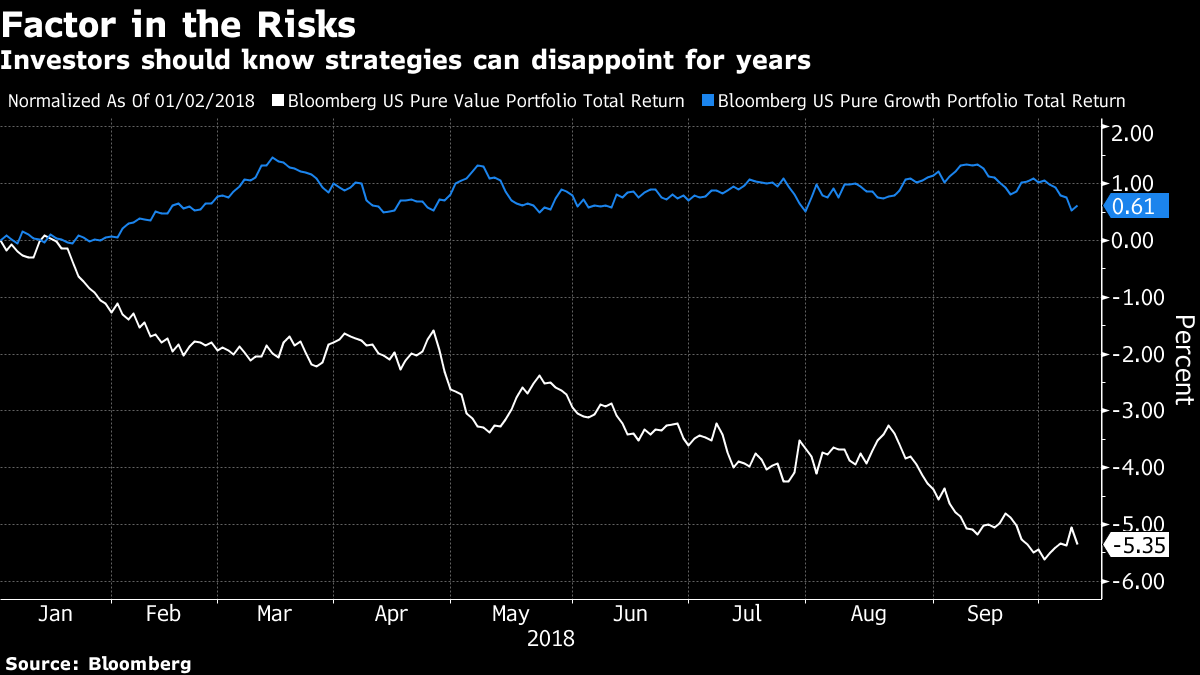by Rachel Evans
(Bloomberg) --There’s danger lurking for investors in one of the most competitive slices of the asset-management industry.
Fund providers are glossing over the risks of smart-beta products -- popular strategies that buy stocks based on ‘‘ factors’’ such as value or growth -- and overemphasizing the potential returns, according to a new white paper from Research Affiliates.
About $1 in every $4 that’s flowed into exchange-traded funds this year has gone to smart-beta strategies, boosting assets to 22 percent of the overall U.S. ETF market as issuers rolled out a plethora of new products. But many buyers are ill-prepared for the long periods of lackluster returns that plague factor investing and could lose money as a result, according to Vitali Kalesnik, Research Affiliates’ director of research for Europe.

“Factor investing is not a free lunch,” Kalesnik, said in an interview about the report, which he wrote with Juhani Linnainmaa, an adviser at the Newport Beach, California-based firm. “When you see five to 10 years of underperformance, don’t worry, that’s to be expected, and realize that’s what you’re getting compensated for.”
Only those that have the stomach to hold their investments over that long time horizon should consider factor funds, as those that don’t are liable to bail before they see gains, he said. More squeamish investors should stick with traditional funds that buy companies based on their market capitalization, he added.
Losing Big
It’s not the first time Research Affiliates has highlighted the importance of timing in investing. A 2016 paper from founder Rob Arnott entitled “How can ‘smart beta’ go horribly wrong” argued that many factor-based strategies were overvalued and could crash. The firm instead champions buying cheap stocks, also known as “value investing,” a strategy that’s suffered years of underperformance.
This report, however, focuses on why investors underestimate the frequency and scale of possible losses from factor funds, particularly when several different strategies are combined in one portfolio.
Multi-factor investing is often encouraged as a way to mitigate the impact of one factor underperforming. But common ways to analyze returns from this approach don’t capture the magnitude of potential losses. Over the last 55 years, 83 percent of the worst returns from factor-based strategies in the U.S. have been more severe than conventional models would suggest, according to Research Affiliates.
“Combinations of factors, just like individual factors, also experience lengthy and sizable drawdowns,” Kalesnik and Linnainmaa wrote. “The risks of factor investing are usually understated (perhaps, severely so) and the diversification benefits tend to be overstated.”
Nonetheless, factor investing can be valuable, they wrote, “given appropriately tempered expectations, and used by investors prepared to weather potential periods of material underperformance.”
To contact the reporter on this story: Rachel Evans in New York at [email protected] To contact the editors responsible for this story: Jeremy Herron at [email protected] Eric J. Weiner, Dave Liedtka





